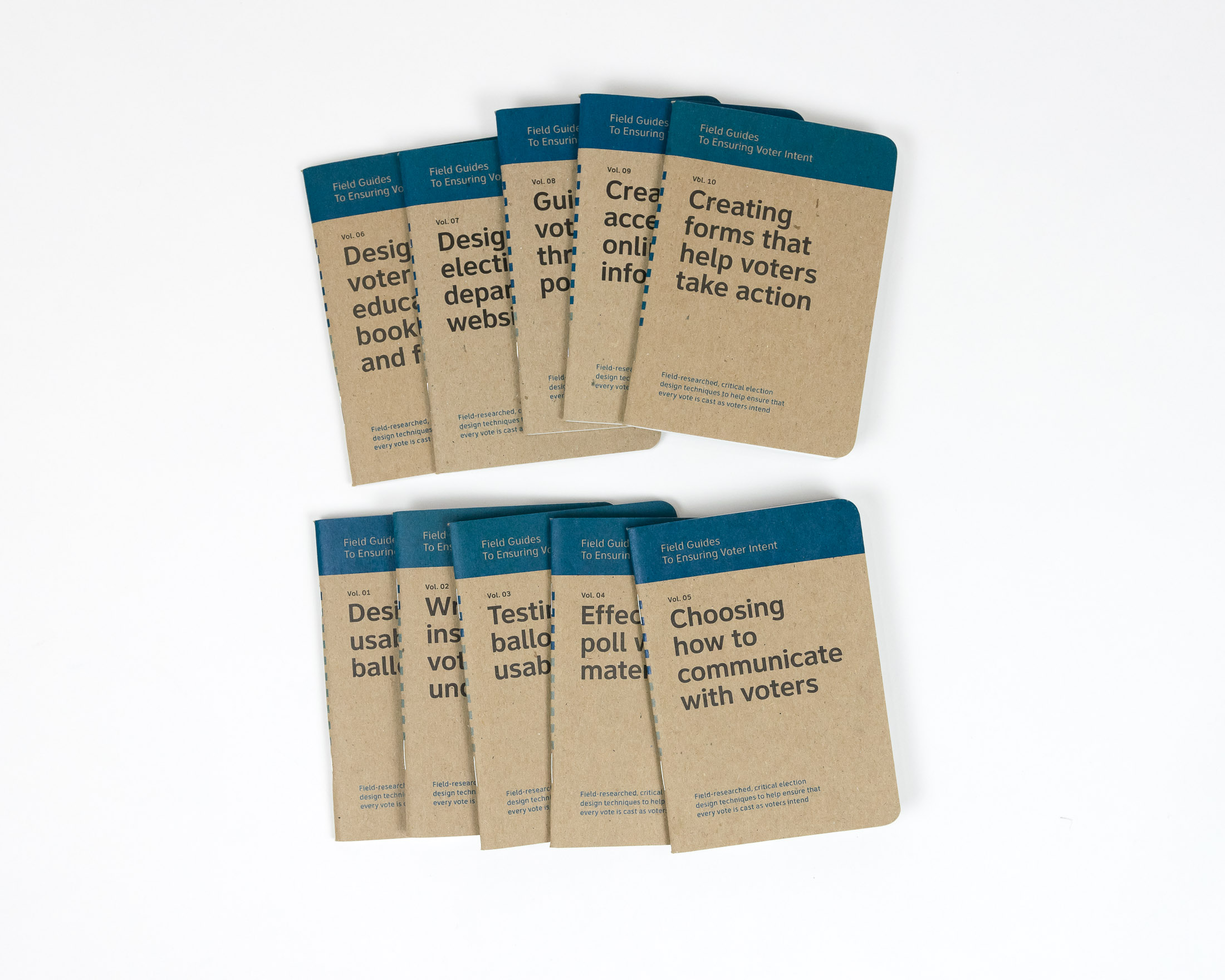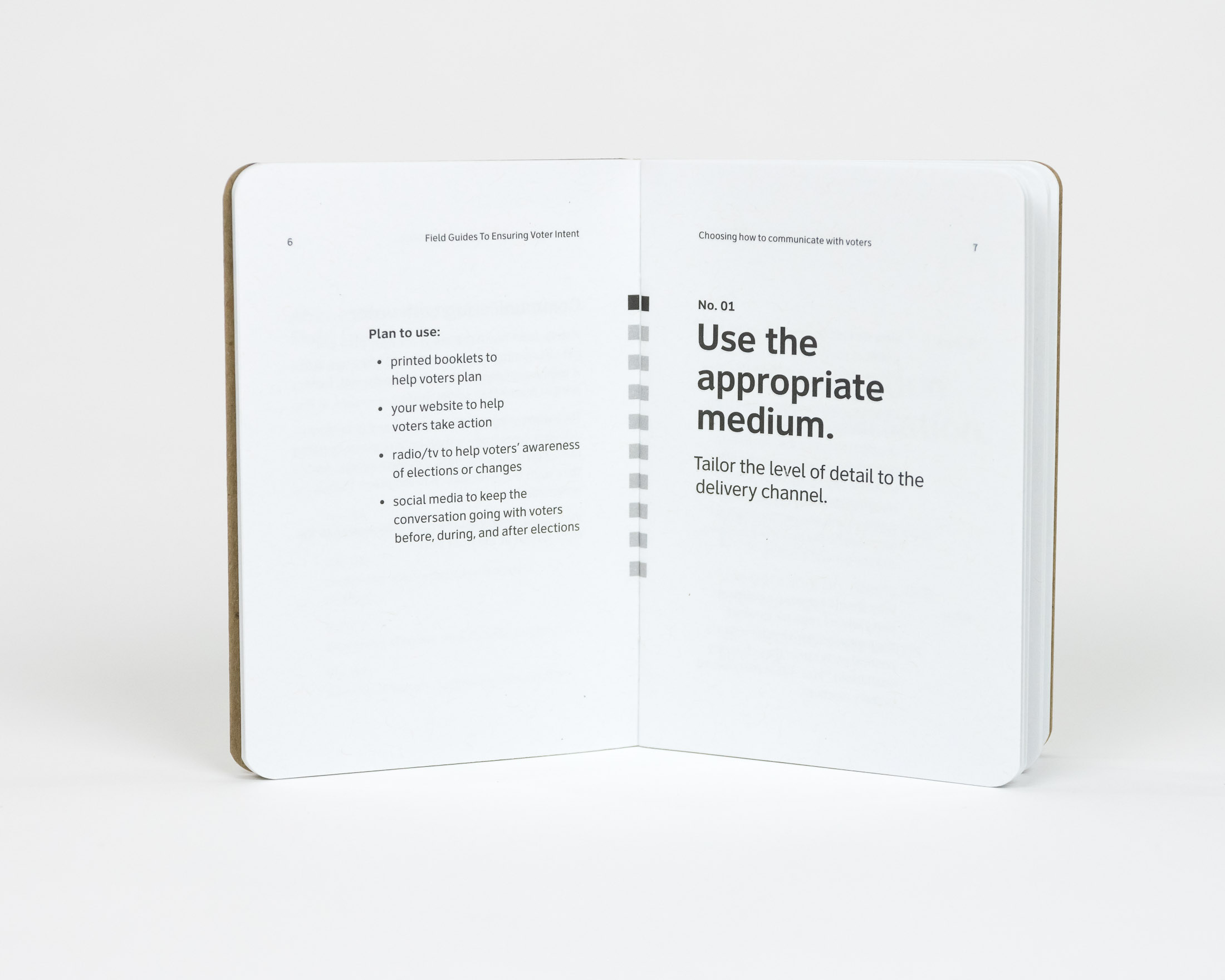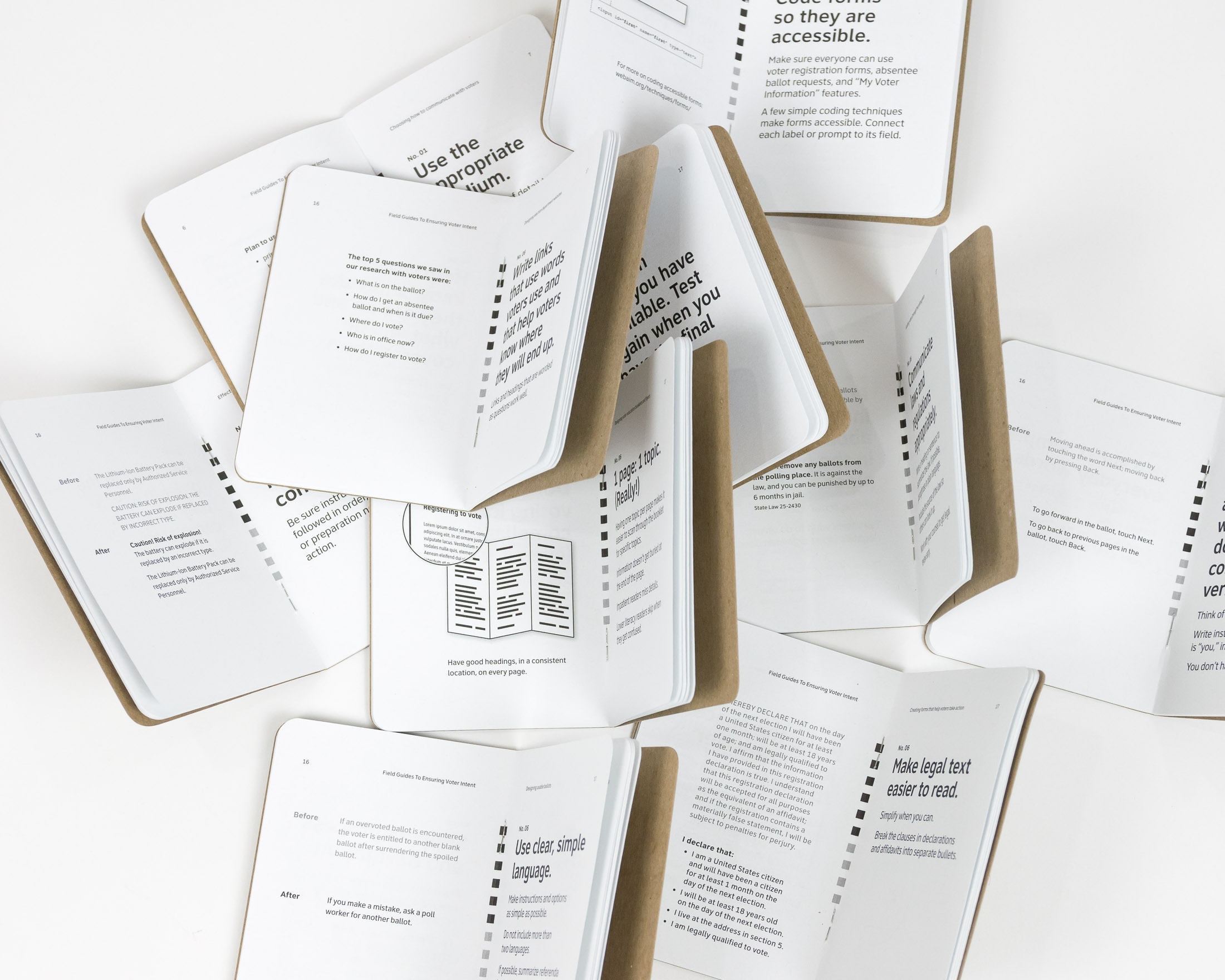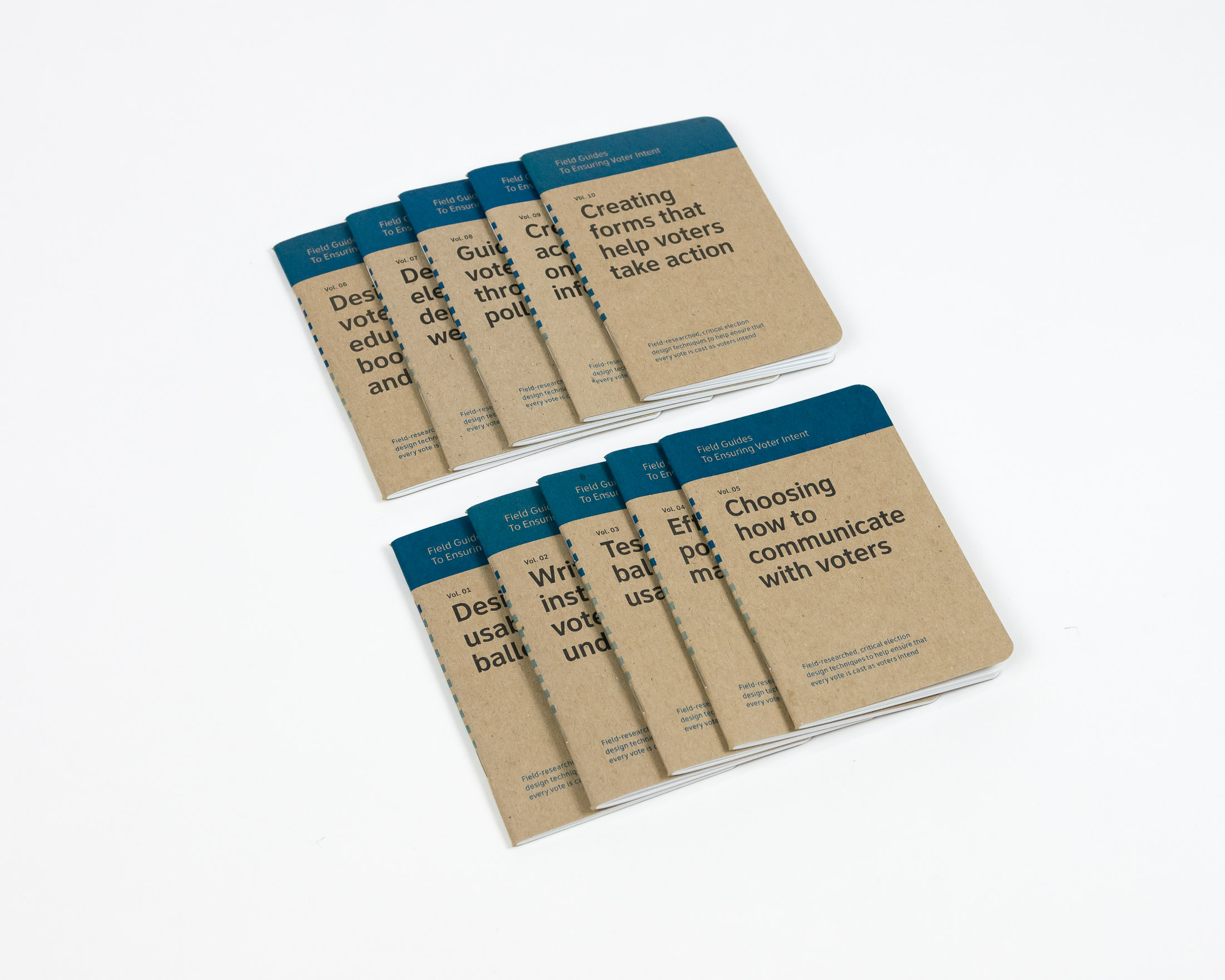The Center for Civic Design‘s Field Guides to Ensuring Voter Intent are a project that we at Scout Books feel very proud to have helped bring to life, and wholeheartedly support them in their mission to ensure that every vote is cast as voters intend. We’re very thankful to Whitney Quesenbery and Dana Chisnell who spoke with us about the history of these guides, and how The Center for Civic Design is helping local officials across the country create well designed ballots.
What’s the mission of the Center for Civic Design?
At the Center for Civic Design, we focus on design research to ensure that every interaction that people have with government is efficient, effective, and pleasant. For the last few years, we’ve focused on research that helps local election officials deliver better voter experiences. Our goal is to ensure that voters can vote the way they intend to, through good design.
What sparked the idea for the guides?
There was a time when no one thought much about how easy a ballot is to read and use. But the presidential election in 2000 made a lot of us look more closely at this basic interaction of democracy and how we vote. Fast forward a few years. In one of the most important projects for ballot design, the Election Assistance Commission hired AIGA Design for Democracy to research and develop best practices for design in elections, which resulted in a beautiful report with great design. But its comprehensive 300 pages were a little daunting for local election officials. Even when Marcia Lausen boiled down the guidance to a Top 10 on ballot design, it was tough getting the word out to local election officials in 5,000+ voting jurisdictions around the country.
There were other reports from great research that would help election officials out there, too, But no one was using them.
We wondered, if there were just a few things that election administrators could do that were free or cheap to do, easy to make happen with the often limited resources that election officials have available to them, and worked within election law — what would those be? And the idea for the Field Guides To Ensuring Voter Intent was born.
The design is simple. Each Field Guide has 10 guidelines or tips that are based on research. Each guideline comes with illustrations and examples. At the end of each Field Guide is a checklist. If you can answer Yes to each item in the checklist, you’re meeting the guidelines with whatever you’re making, writing, or testing.
Who designed them?
The layout of the Field Guides and the illustrations are all the work of our design partner, Oxide Design Co. Dana Chisnell is the managing editor. She develops content with Center for Civic Design co-director Whitney Quesenbery, and with research partners on the projects including Cyd Harrell and Caroline Jarrett.
How are they distributed?
Thanks to the original Kickstarter supporters, the MacArthur Foundation, and now the Democracy Fund, we’ve been able to give away the Field Guides to election officials and other government workers for free. There are about 3,000 sets out in the world, mostly in election offices, but we’ve seen them in other government offices, in design classes, and most recently at the Cooper Hewitt, the Smithsonian Design Museum in New York City.
Most often, we hand them out at events for election administrators. Among the team, we attend between 10 and 20 state or national events every year, where we often do workshops or talks civic design. We’ve also sent copies of the Field Guides to state election offices, so they can be distributed to all of the local elections offices.
In the fall semester of 2016, we started teaching a course on election design that is based on the Field Guides content in the University of Minnesota Humphrey School of Public Affairs’ Election Academy. As far as we know, it’s the first course of its kind anywhere in the world.
A few years ago, we created an online version of the Field Guides. The physical books are a wonderful form factor, but being able to put the information in anyone’s pocket with a responsive, accessible site is also valuable.
Thanks again to Whitney Quesenbery, Dana Chisnell, and The Center for Civic Design for taking the time to talk about their guides. You can learn more about them and the work they do on their website, and you can see the guides online here.





